Enhance Your Workspace: How Plants Improve Workplace Air Quality
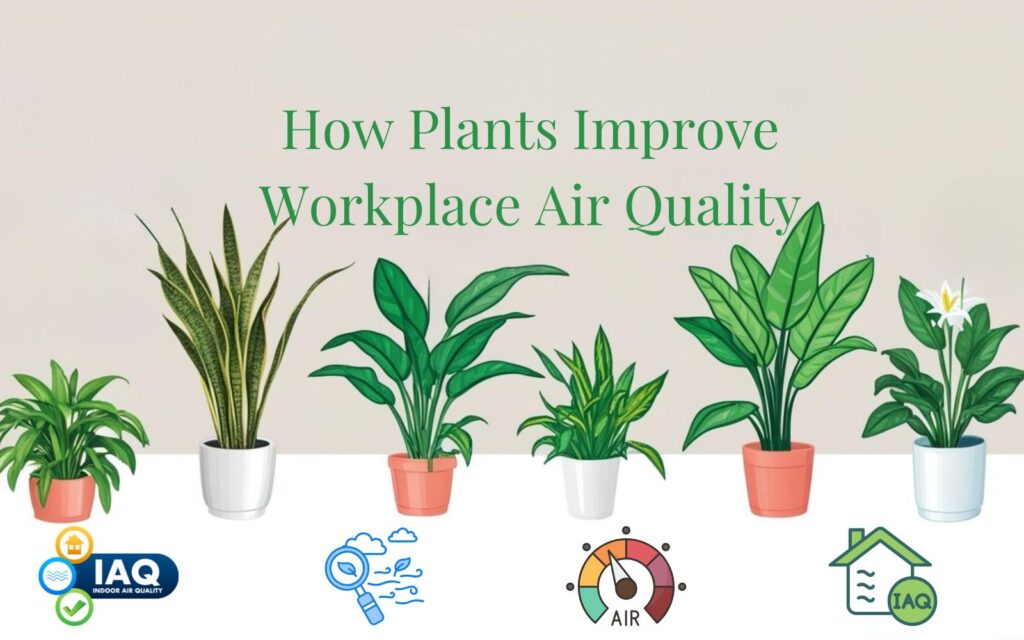
Ever feel drained after spending hours in an office? It’s not just stress – your environment significantly affects your energy levels and focus. Indoor air quality is a silent factor that impacts health and productivity.
Many indoor spaces, especially workplaces, are full of indoor air pollutants like volatile organic compounds (VOCs) and carbon dioxide.
Plants enhance indoor air quality and provide fresh air for your workspace.
This article explores how plants improve workplace air quality by removing toxins, regulating air circulation, and making indoor spaces healthier for everyone.
Key Takeaways
- Plants improve air quality by filtering out pollutants like VOCs, nitrogen dioxide, and carbon dioxide.
- They regulate temperature and relative humidity, creating a more balanced indoor environment.
- Certain plants have a significant effect on reducing airborne particles and boosting human health.
- Indoor plants can reduce costs linked to ventilation and temperature regulation.
Why Air Quality Is Critical in Indoor Spaces

The Problem With Poor Air Quality
Many offices are sealed chambers with limited natural ventilation. This can lead to:
- High levels of airborne particles like dust and VOCs.
- Carbon dioxide builds up from people’s breathing and poor air exchange.
- Increased risk of sick-building syndrome includes symptoms like headaches, fatigue, and irritation.
HVAC systems and air fresheners may mask the problem, but they don’t solve it. Indoor plants, on the other hand, create a more sustainable solution.
How Plants Improve Workplace Air Quality
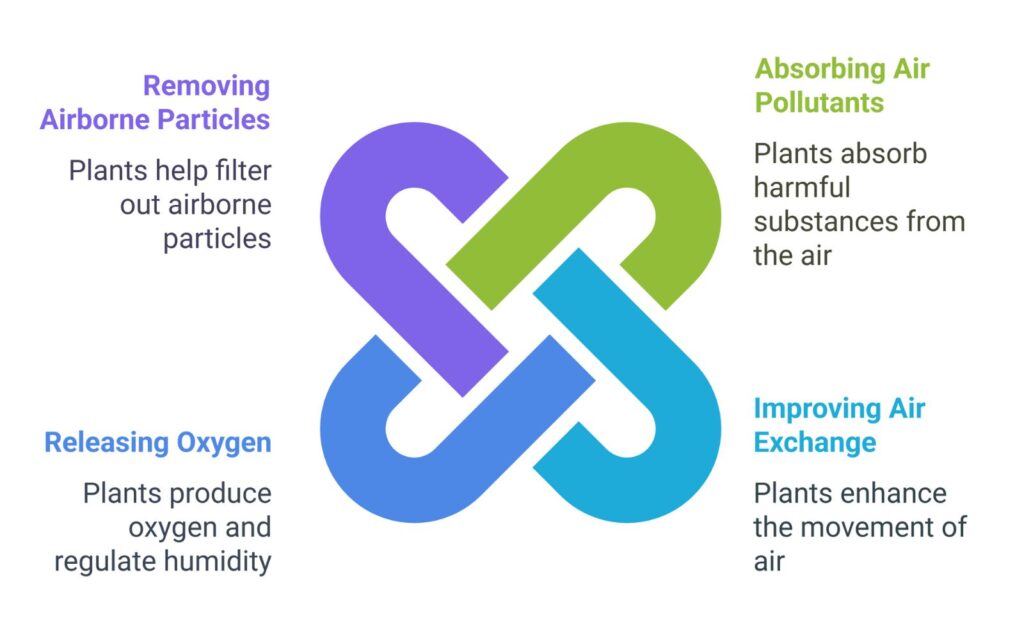
1. Absorbing Air Pollutants
Plants absorb air pollutants like VOCs through their leaves and roots. VOCs come from everyday items like:
- Office furniture
- Paints
- Cleaning products
Research has shown that certain plants, such as peace lilies and snake plants, can significantly reduce VOC levels.
Fact: A NASA study demonstrated that house plants effectively remove toxins like formaldehyde, benzene, and carbon monoxide from sealed chambers.
2. Improving Air Exchange and Circulation
Plants help regulate air exchange by promoting natural ventilation and humidity levels. While mechanical ventilation in buildings works to improve air circulation, adding plants enhances the overall effect by:
- Filtering indoor pollutants.
- Balancing moisture levels.
- Creating healthier indoor environments.
Pro Tip: Place office plants near windows or doors to work in tandem with natural ventilation systems.
3. Releasing Oxygen and Regulating Humidity
Plants release oxygen during photosynthesis, replacing carbon dioxide in the air. Additionally, their ability to increase relative humidity reduces dryness and airborne particles. Balanced humidity supports:
- Better temperature regulation.
- Reduced respiratory irritation.
- Lower spread of viruses.
4. Removing Airborne Particles
Plants trap airborne particles like dust on their leaf surface area. Over time, they reduce particulate matter and improve indoor air quality.
Regularly cleaning the leaves ensures they remain effective at air purification.
The Best Plants to Improve Air Quality
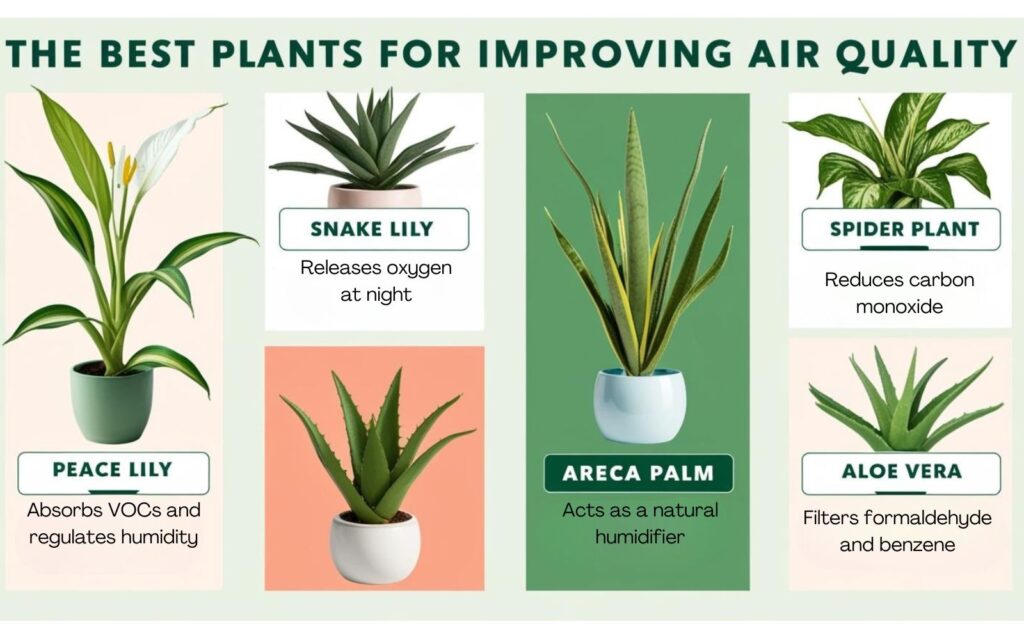
If you want to create a healthy indoor environment, start with these potted plants:
- Peace Lily: Absorbs VOCs and regulates humidity.
- Snake Plant: Releases oxygen at night, ideal for improving air in sealed chambers.
- Spider Plant: Reduces carbon monoxide and nitrogen dioxide levels.
- Areca Palm: Acts as a natural humidifier, improving air circulation.
- Aloe Vera: Filters formaldehyde and benzene.
Tip: Place at least one plant per square meter to see noticeable benefits.
Other Benefits of Plants in the Workplace
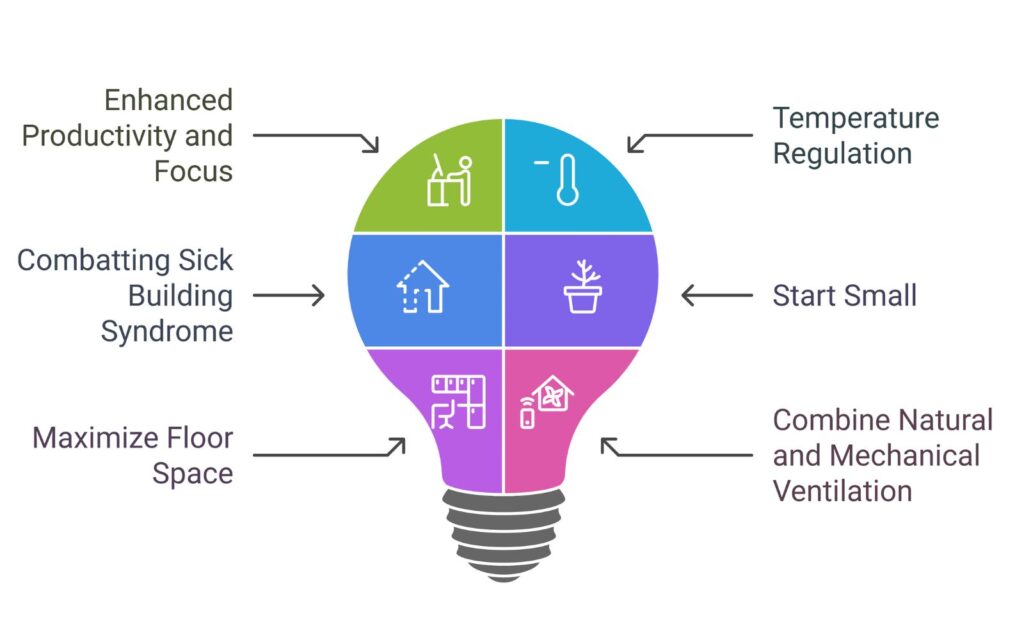
Plants do more than improve air quality. Let’s explore some other benefits they bring:
1. Enhanced Productivity and Focus
Research has found that spending time around plants increases positive feelings and boosts concentration. Placing plants in workspaces can also positively impact creativity and problem-solving.
2. Temperature Regulation
Plants help stabilize indoor temperature by reducing heat absorption and balancing humidity levels.
This reduces dependence on HVAC systems and helps reduce costs.
3. Combatting Sick Building Syndrome
The presence of plants reduces pollutants and airborne particles, making the air feel fresher.
This can prevent long-term effects like allergies and fatigue caused by indoor air pollutants. Practical Tips for Adding Plants to Your Workspace
4. Start Small
If you’re unsure where to begin, start with low-maintenance house plants like pothos or succulents. These require minimal care and thrive in most indoor spaces.
5. Maximize Floor Space
Use corners, shelves, or unused desks for potted plants. You don’t need to overcrowd-generally speaking, even a few plants can make a difference.
6. Combine Natural and Mechanical Ventilation
Pair office plants with proper ventilation for the best results. Open windows for fresh air and use fans or air purifiers to improve air circulation.
Summary
Plants are nature’s solution to many workplace problems. They remove toxins, improve air exchange, and enhance relative humidity, making them perfect for combating air pollution in indoor spaces.
Beyond the health benefits, plants positively impact productivity and well-being while reducing the cost of mechanical ventilation systems.
With just a few plants, you can transform your workspace into a cleaner, greener, and healthier place to spend time.
Frequently Asked Questions
How Do Plants Improve Workplace Air Quality?
Plants improve the air quality by absorbing pollutants like VOCs, releasing oxygen, and balancing humidity levels.
What Are the Best Plants for Air Purification?
Peace lilies, snake plants, and spider plants are highly effective at reducing indoor air pollutants.
Can Plants Replace Mechanical Ventilation?
No, plants are a complement to ventilation systems. They enhance air purification and humidity but work best with proper ventilation.
How Many Plants Do I Need for a Healthier Workspace?
Aim for at least one plant per 100 square feet of floor space or one plant per desk.
Do Plants Require Special Care in Offices?
Most indoor plants are low-maintenance and only need occasional watering, good light, and dusting of their leaves to stay effective.
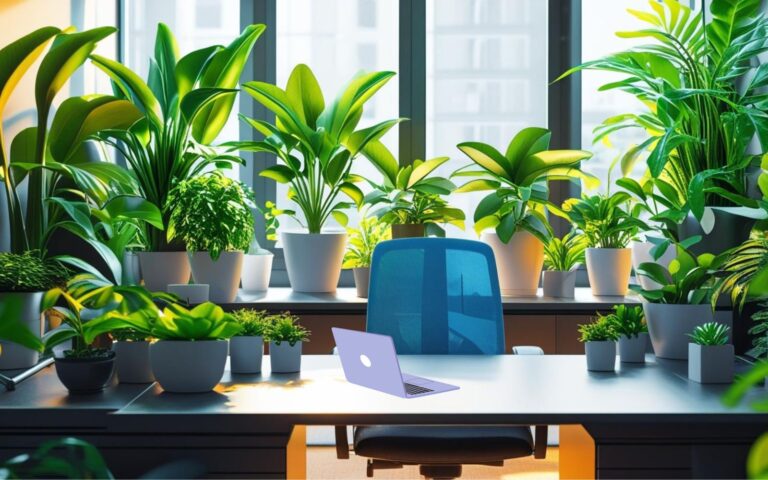


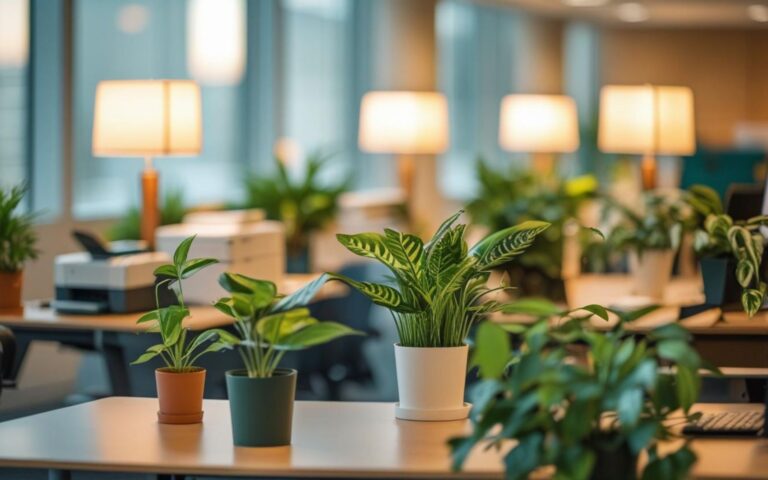


One Comment